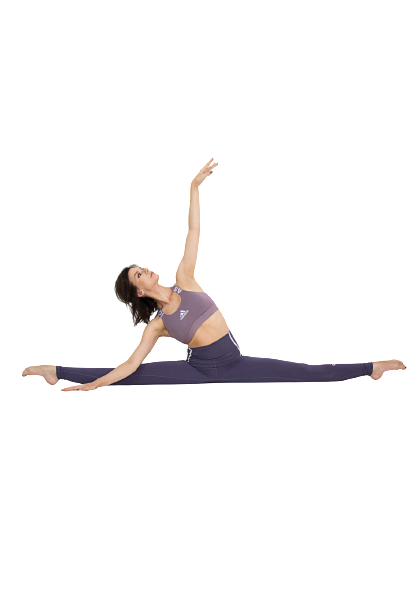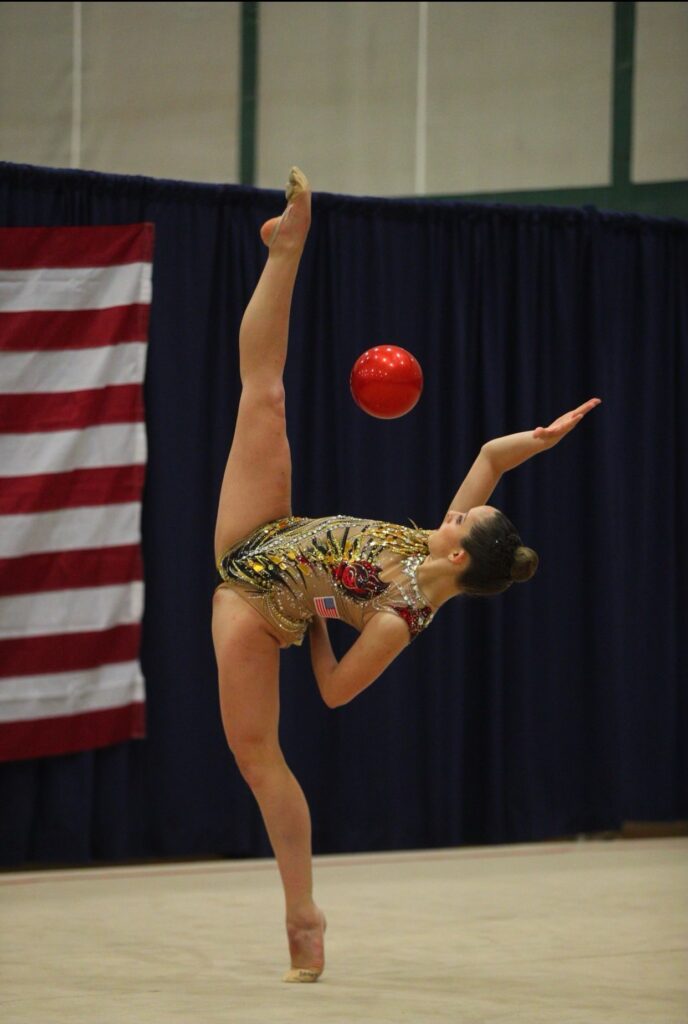Rhythmic gymnastics is a beautiful and elegant Olympic sport that combines elements of gymnastics, ballet, dance, and apparatus manipulation. It involves both individual and group routines choreographed to music using a ball, rope, hoop, ribbon, and clubs. This sport is known for its versatility and harmony, blending physical activity with the development of strength, flexibility, coordination, and artistry.
Participating in rhythmic gymnastics helps children build confidence, discipline, and leadership skills essential for life. The sport emphasizes the coordination of movements with and without apparatus, improving flexibility, strength, and posture. Additionally, the musical accompaniment in rhythmic gymnastics enhances kids’ ability to understand and perform movements in sync with music, fostering a sense of rhythm and artistic expression.
The benefits of rhythmic gymnastics extend to aesthetic education, motor memory development, and attention improvement. It combines sport and art effectively, making it an excellent activity for children’s development and well-being.
Coach Anastasiia:
Anastasiia has over 25 years of experience in rhythmic gymnastics, including 15 years as an athlete and 10 years as a coach.
She became a master of sports in rhythmic gymnastics, then continued to improve her knowledge. She has a master’s degree in Physical Education in the specialty “Training of Highly Qualified Athletes in Chosen Sports.” She does not stop there; she continues to improve her skills and knowledge from eminent coaches worldwide.
She has experience working with young children who are just getting acquainted with this beautiful sport and athletes who have the highest achievements and perform at various ranks of competitions, from state events to international competitions.
Coach Anastasiia was invited to share her experience in different countries and continues to consult and exchange experiences with various clubs.
“I believe rhythmic gymnastics is a sport for everyone, and I am committed to making it accessible to as many as possible. It brings me so much delight to see our gymnasts improve with time and how much satisfaction they get from competing. I consider it a great honor to be a part of their journey, and as such, I am dedicated to giving them the very best guidance and assistance I can.”


Сoach Nerea:
Nerea Francis has dedicated her life to rhythmic gymnastics, with over 15 years of experience in the sport. She started at age three, and her passion and dedication led her to compete as a member of the US National Team for four years. Nerea has competed in national and international competitions, traveling across the United States and Europe. She has also achieved numerous victories in her career.
For the past four years, Nerea has been sharing her coaching experience. She loves helping young gymnasts develop their skills and passion for the sport. Nerea is committed to guiding each gymnast to enjoy their journey and reach their full potential.

If you've ever watched a rhythmic gymnastics routine, you know exactly what we're talking about. These challenging routines put kids' flexibility to the test. Plus, they keep its pliability from decreasing with age. Additionally, the activity's emphasis on balance training helps them develop more robust bodies.

Rhythmic gymnasts can express their creativity in various ways through their routines. Every sport has its own set of regulations, but only a select few encourage athletes to let their imaginations run wild. Nonetheless, engaging in this pursuit will encourage uniqueness, curiosity, and the formation of original approaches among participants. Kids can express their individuality and creativity while participating in this sport.

Children's attitudes will improve due to the positive effects of rhythmic gymnastics. This discipline will help kids improve their proprioception beyond just staying physically active. It's great for boosting pride and assurance in one's abilities. They also start talking to their instructors and classmates. In doing so, they will discover the benefits of collaboration, mutual aid, and shared enjoyment.

Confidence grows when one sees their efforts bear fruit and their aims realized. Aspirational goals are more likely to be attained by young people once they have achieved a sporting or fitness objective. As a learning experience, this is both stimulating and fulfilling.